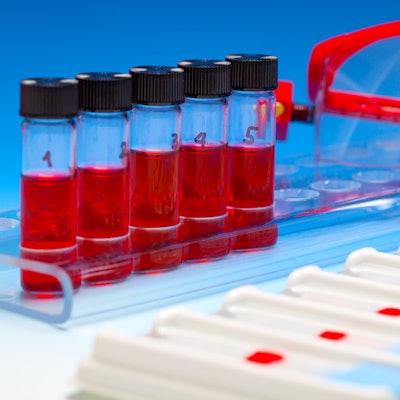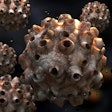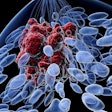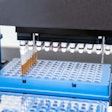
In 2021, the world market for blood grouping and blood typing rebounded from a 3.2% decline in 2020 due to COVID-19 impacts, reaching an estimated $945 million in revenues, according to an upcoming issue of the In Vitro Diagnostics Business Outlook.
The overall market is expected to stabilize in 2022 and grow at a 1% compound annual growth rate (CAGR) through 2026 when revenues could reach $1 billion, according to the report, which is published by Kalorama Information, a sister publication of LabPulse.com.
Accurate blood group typing is needed to enable blood transfusions that require a crossmatch test to confirm blood-group compatibility between the donor and recipient.
Blood is typed either manually using a slide and antibodies or automatically using biochemical mechanisms which use microtiter plates to determine ABO and Rh types, the new report noted.
"Automated blood typing has several advantages over manual typing in terms of cost, efficiency, and errors," it said.
One advantage of automated blood typing stems from the shortage of healthcare personnel, which can lead to the use of cross-trained, less-experienced staff at transfusion testing services.
"Use of automation may allow the blood bank to conduct tests without the need for costly specialized technical staff," the report said. "Furthermore, since interpretation of the immunohematology reaction is done by the instrument without subjective interpretation by the technologist, human errors are reduced."
With roughly 90% of sales, North America is by far the largest geographic market for blood grouping and typing, but the Asia Pacific region is growing the fastest with 5.4 percent CAGR expected from 2021 through 2026.
Four companies -- Ortho Clinical Diagnostics (now QuidelOrtho), Grifols, BioRad, and Hologic -- are generating the lion's share of the revenue, the new report said, adding that Barcelona-based Grifols and Raritan, NJ-based Ortho Clinical Diagnostics hold the greatest market share.
Although it is a market leader, the outlook for Ortho's blood typing business became less clear with its recent acquisition for $6 billion by Quidel.
However, prior to becoming part of the newly named QuidelOrtho in May, Ortho had announced an almost 8% year-over-year increase in its transfusion medicine segment revenues to $173.6 million for the first fiscal quarter, ending April 3.
According to Ortho, its transfusion medicine business includes immunohematology instruments and tests used for blood typing to ensure patient-donor compatibility in blood transfusions, as well as donor screening instruments and tests used for blood and plasma screening for infectious diseases, primarily for U.S. customers.
On a conference call to discuss its Q1 financial results, the company said its China transfusion medicine business grew 11% year over year, driven by strength in its immunohematology and donor screening businesses.
Meanwhile, Grifols noted recently that its diagnostics division was affected by COVID-19 and Zika testing terminations during Q1, while its underlying business showed strength. Reporting results for the second half of 2021, the firm noted that blood typing solutions were core growth drivers within diagnostics, offsetting the impact of the mandatory termination of Zika testing in blood and plasma donations.



















